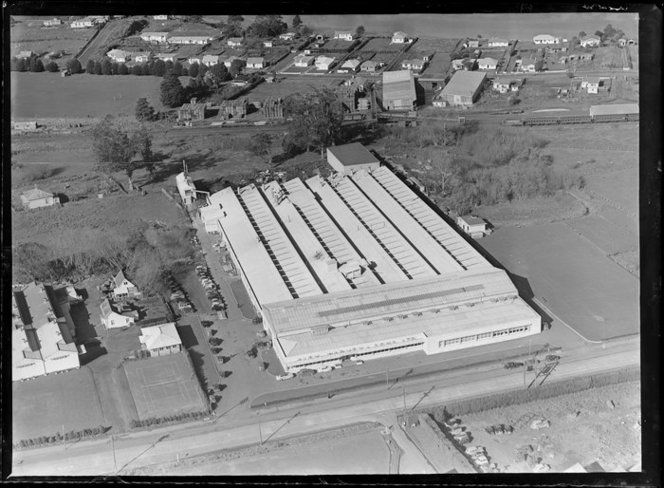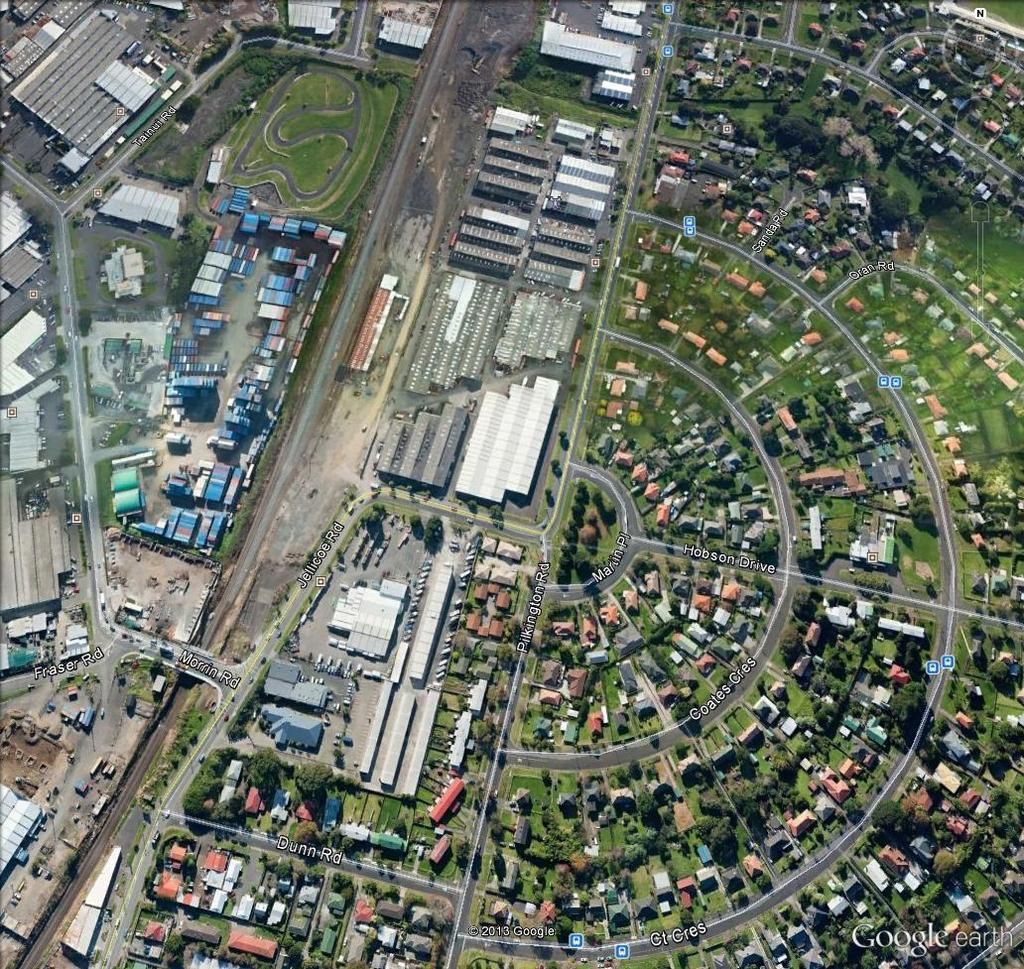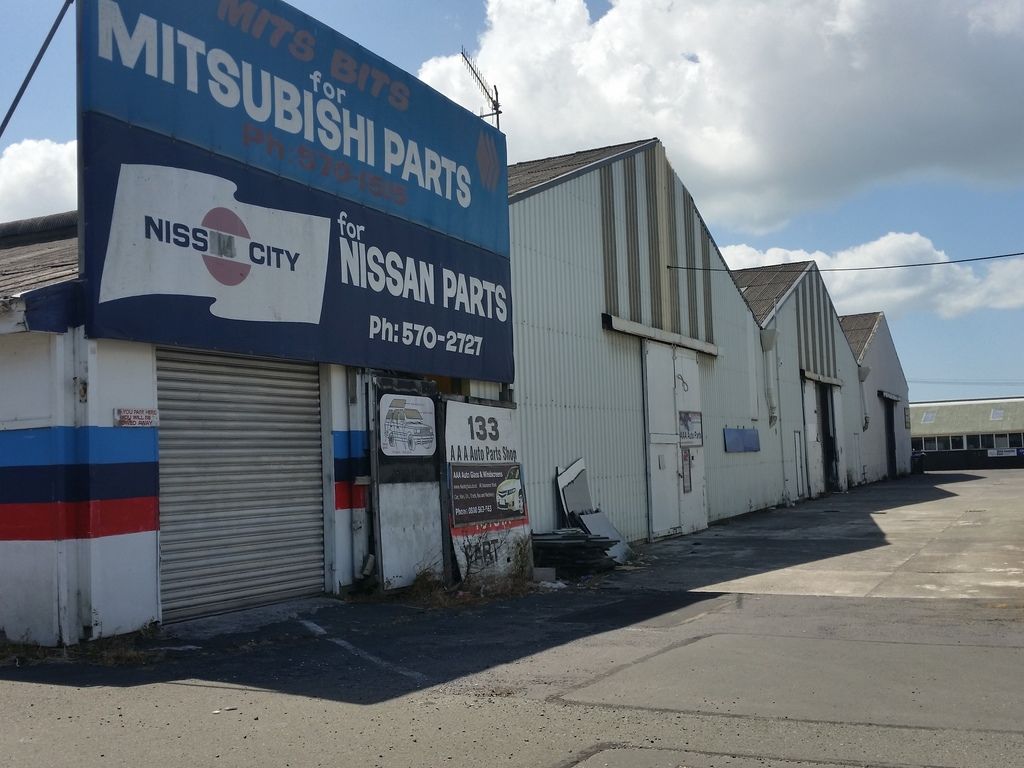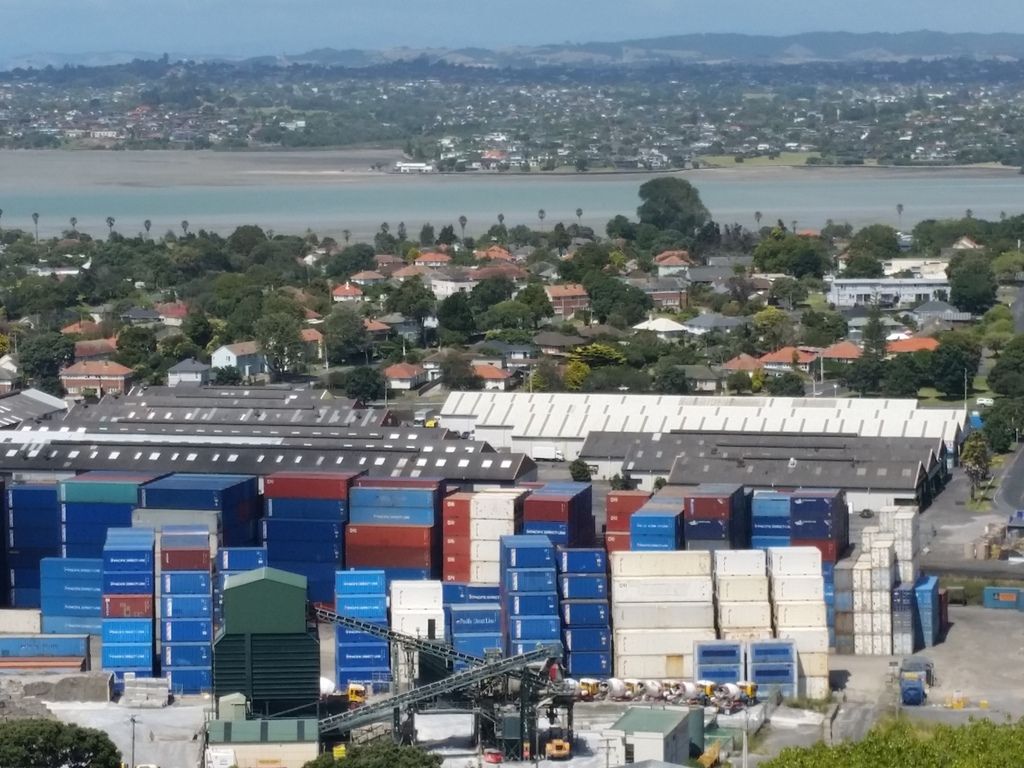|
|
Post by Damon on Dec 16, 2016 12:12:05 GMT 12
Does Seagrove airfield fit into this topic? Or is that classed under Waikato?
|
|
|
|
Post by Dave Homewood on Dec 16, 2016 12:58:10 GMT 12
Seagrove is definitely Auckland, not Waikato
|
|
|
|
Post by emron on Dec 16, 2016 20:28:31 GMT 12
I can't see it on any of the indexes but agree that it should have been. After all it must have been constructed by the P.W.D. Although just commissioned for the RNZAF rather than US. But wasn't it also unique in hosting it's own Marine Squadron ? Both nearby Ardmore and Mangere Aerodromes made the list. Maybe the cameraman just missed overflying Seagrove on the day.
|
|
|
|
Post by pjw4118 on Dec 19, 2016 13:31:25 GMT 12
|
|
|
|
Post by pjw4118 on Dec 19, 2016 14:56:11 GMT 12
According to the PWD Aerodrome Branch , the US requested fighter strips be built to defend Auckland , Whenuapai and Mangere were earmarked with Seagrove and Ardmore being built . Seagrove was surveyed in April 1942 and open by the end of the year. The PWD objected to Ardmore because of the peat base and wanted soil testing. A US Marine liasion officer said that the Japs would be here before the tests were complete , so just build it.. The peat did cause problems when Corsairs arrived.
|
|
|
|
Post by emron on Dec 21, 2016 20:58:10 GMT 12
Peter, do you have the locations for these 2 camps ? Because there were as many as 25 of them spread across the Mahurangi district from Kaipara Flats in the East to Pakiri in the West. Most were on farms in the Warkworth area and often 2 or 3 camps on one property. I can't find if they had official names and they are only identified in the archives as A1,A2,A3,B,C,D1,D2,etc. I'm sure each had a local name at the time. This was as far North as the US camps reached. The railway was close by at Kaipara Flats station and truck convoys would have driven up and down the main North Rd to Auckland.
|
|
|
|
Post by pjw4118 on Dec 23, 2016 7:22:01 GMT 12
Sorry Ron , I don't , Harry Biolettis book " the yanks are coming" lists the units in NZ and general locality ,, it seems that the 43 rd and 25th US Army Divisions were in Warkworth. The Riverina in the main street was HQ and he mentions camps in Wilson Rd and several in Woodcocks Rd. Kiwi troops were at Matakana and the Dome. Maybe a close read of the book will turnup more locations.
|
|
|
|
Post by Dave Homewood on Dec 23, 2016 8:56:35 GMT 12
If you find anything on US military camps or establishments in Hamilton, Cambridge or the Waikato in general I'd be very interested. I'm told there were lots of Yanks in Hamilton but no-one seems to know why.
|
|
|
|
Post by emron on Dec 27, 2016 17:38:40 GMT 12
Dave, I haven't yet found any official reference to US facilities in the Waikato but I'll continue looking. Likewise no other explanation for troops in the area other than short stay visitors on leave who were usually billeted by locals.
Meanwhile I have some additional info about the Navy Mobile Hospital No.6 at Avondale. Previously I thought that the hospital was never commissioned before the contract was cancelled. However reading in an article by local historian Lisa Truttman (Timespanner) published in the Avondale Historical Journal 2013, I see that it was opened for patient admissions in late October 1943. Even one casualty is too many but thankfully it appears that numbers were less than feared and occupancy peaked at only half the designed capacity of 2000 beds. Construction was still ongoing during this time and remained incomplete when the project ended with the hospital closure in May 1944. Almost immediately work commenced to convert over to the proposed school layout. The Navy vacated the site in July and the steel prefab buildings that they had supplied were returned for re-use overseas. The City Council took over the Western Springs camp in August and requested relocation of buildings from Avondale sufficient to house 30 families. Many of the other temporary structures were trucked away to neighbouring suburbs and quickly erected as state housing. The site was cleared and enough rebuilding completed in time for both the College and Intermediate to open for the 1945 school year commencing Feb-5. The other permanent buildings to remain on site were the two double-storey nurses homes at the Victor St entrance. They weren't part of the school complex but became a hostel for students attending the Teacher's Trainng College in Epsom.
The MOTAT connection: In the mid 1950's the Auckland Education Board built and occupied their bulk store at the Avondale school site, on the Holly St boundary close to the old hospital boilerhouse. When the Board was abolished in 1989 there was no longer need to store school supplies there. Shortly after that MOTAT took up the lease there and relocated their stores from Sylvia Park. MOTAT has since moved from Holly St.
Talking about military bases being used for education purposes in peacetime, there were similar events at Ardmore. In 1948 the University of Auckland School of Engineering was established in hangars and barracks at the eastern end of the airfield .They were in use until 1969 when the Engineering School relocated to the main Auckland campus in Symonds St. Also in 1948 the Ardmore Teachers Training College was set up in the camp barracks at the other end of the road. The Training College closed in 1974.
The MOTAT connection: Shortly after the University vacated their hangars at Ardmore MOTAT took up the lease of one of them and used it for storage and workshop until it was closed in the mid 1980's. The aircraft were relocated to Meola Rd and the spares to Sylvia Park. Around 1980 three hangars near the control tower at the airfield came up for disposal and workers from the Museum's TEP Scheme demolished them and salvaged materials. The trusses and cladding wre recovered and delivered to Meola Rd. Only one of the hangars was rebuilt there before funding ran out and the TEP Scheme closed. It's still on site as the Aviation workshop. At that time the old Training College site was also being cleared by TEP scheme workers and the camp Fire Station was salvaged and recovered to Meola Rd. It remains in use there as a military vehicle garage.
|
|
|
|
Post by Dave Homewood on Dec 27, 2016 17:59:28 GMT 12
Dave, I haven't yet found any official reference to US facilities in the Waikato but I'll continue looking. Likewise no other explanation for troops in the area other than short stay visitors on leave who were usually billeted by locals. Thanks. It's all a bit puzzling. Maybe significant numbers rotated through Hamilton on "R&R" giving the impression that there was a large continuous presence in the town. |
|
jaybee
Squadron Leader
  
Posts: 125
|
Post by jaybee on Dec 27, 2016 19:34:18 GMT 12
Hi all, have you seen the book 'Defending New Zealand; Ramparts on the sea' by Peter Cooke. This 2 volume set covers this sort of material.
In relation to Warkworth, it lists a brigade camp, with a total of 41 encampments within a 5 mile radious, built specifically by the PWD at a cost of £191,029 and covering 1714 buildings (page 627).
A quick scan doesn't reveal any facilities built specifically for the US forces in Hamilton or Cambridge, but I wonder if the Claudelands camp may have hosted US forces?
Cheers
|
|
jaybee
Squadron Leader
  
Posts: 125
|
Post by jaybee on Dec 27, 2016 19:39:57 GMT 12
Page 628 of the same volumes lists 48 seperate camps or facilities built by the PWD expressly for US forces
|
|
|
|
Post by Dave Homewood on Dec 27, 2016 20:07:22 GMT 12
Claudelands was a New Zealand Army camp for at least part of the war, but may well have housed Americans too. It would have only been bell tents and they'd have made use of the showgrounds facilities like ablutions block and cookhouse. Te Rapa Racecourse was also used by the New Zealand Army.
|
|
|
|
Post by emron on Jan 17, 2017 21:44:02 GMT 12
Peter, at the start of this thread names like Opaheke, Hilldene, Karaka Nth and Grande Vue were a mystery. Since then you/ve posted most of the photos of these camps and their locations are now explained. I was just looking at a 1970's street map of South Auckland and it still showed the locations of many small railway stations, even though by then they were long closed for passenger service. These included Opaheke, Karaka, Paerata and Buckland on the the Main Line south with Helvetia, Patumahoe and Mauku on the Glenbrook branch line. They had all opened many years before WWII and probably most used for loading freight and livestock from the neighbouring farms. The authorities would be sure to have taken them into account when deciding where to site the camps around the Pukekohe area. At least six of the camps chosen were close by to them and likely took their name. I don't know if troop trains ever did regularly use these stations but they should have been a convenient delivery point for building materials and camp supplies and closer than the main stations at Papakura or Pukekohe. These smaller stations saw declining use after the war and passenger services were withdrawn from the Paerata - Waiuku branch line in 1948. Paerata was the last of the others to close in 1972. These days although no trains stop at those places there is still much passing traffic. Pukekohe remains as the southern terminus of the suburban rail network. Going against the trend the Paerata - Glenbrook line was upgraded and extended to the Mission Bush terminus. This was done to provide connection to the NZ Steel Mill and was opened in Oct-1968. At the same time the resulting branch line from Glenbrook to Waiuku was closed. However this was taken over by the Glenbrook Vintage Railway who have from 1972 operated popular steam train rides there. Depending on what the future demand might be, we could yet see some of these old names re-instated as a destination on the rail schedule.
|
|
|
|
Post by pjw4118 on Jan 18, 2017 8:24:51 GMT 12
Thanks Ron , I am planning another trip to AWMM archives later this month and hope there are more treasures to be found. Following Daves comments about US servicemen in Hamilton ( and Cambridge) I have been finding photos of US servicemen all over the North Island , Taupo , Napier and even Gisborne , maybe on leave.
I have also had a look at radar sites , emergency airfields and even objectors camps and I am amazed at the scale and speed of construction so its not suprising that any spare people , especially trained servicemen were sent out to building sites to help.
|
|
|
|
Post by pepe on Jan 21, 2017 19:37:59 GMT 12
For those with an interest in the subject I can recommend "United States Forces in New Zealand 1942-45" by Denys Bevan.
This publication contains quite a comprehensive and detailed record of the various US units that arrived and were based in New Zealand during WW2.
Of particular interest may be several maps which show the locations of many of the camps already mentioned in this thread.
For instance, US camps recorded in the greater Warkworth/Wellsford areas included the Warkworth Showgrounds, Gummers Farm (Dome Valley), Whistlers Farm (Omaha), Gubbs Farm (Perry Rd), Burma Road (Tapora, Kaipara Harbour ), Matakana, Falls, Goatley, Woodcocks and Wylies Roads (Warkworth).
The camps utilized also extended further north than the Rodney area with ones at Three Mile Bush and Maungatapere, both just outside Whangarei, utilized by several US units.
The book does not record any permanent camps in the Hamilton area, but does note that large numbers of US troops travelled widely throughout the North Island on leave. Rotorua was a popular R & R destination with several of it's hotels reserved on an ongoing basis for US military personnel.
|
|
|
|
Post by pjw4118 on Feb 8, 2017 12:22:46 GMT 12
Camp Bunn Then & Now A few pictures to show the changes "  ]     I recall talk that there was a lot of theft from these stores mainly petroleum and it was said that the Pioneer driver of a tanker load that went missing was court martialled and executed. Maybe an urban myth? |
|
|
|
Post by emron on Mar 26, 2017 20:33:59 GMT 12
75 YEARS AGO IN THE SOUTH PACIFIC
In February 1942 NZ was fearful of imminent invasion by Japan and appealed to our allies for help.
The British Government diverted additional Hudson bombers and Kittyhawk fighters from the Lend Lease program and President Roosevelt promised troops of the Ist Marine Division to be embarked to NZ as soon as possible. Meanwhile NZ continued to reinforce it's large garrison in Fiji with troops and the first squadron of Hudsons. Both allies thought NZ was too remote to be an immediate target of Japan. The US Navy had already put in place action to secure and provision the strategic chain of islands in the Pacific north of NZ. Straddling 20deg S latitude and stretching from BoraBora in the east to New Caledonia in the west they would form a barrier to further Japanese advance and protect the vital shipping lane from Australia to Panama. The 1st Construction Detachment was already in convoy to BoraBora in The Society Islands (near Tahiti) to establish a bulk fuel depot there. Further Detachments would be dispatched in quick succession during April to destinations: Upolu and Tutuila, Samoa; Tongatapu; Fiji; Efate, New Hebrides (Vanuatu); and Noumea, New Caledonia to construct airfields, ports and tank farms. This defensive line was soon to be tested when a major allied Naval Task Force was assembled and repulsed the Japanese Navy advance during the Battle of the Coral Sea in early May.
The US Government considered NZ as a safe enough location that planning was well advanced to build a major naval base at Auckland to support the Pacific Fleet. US Navy staff would arrive in early April to advance this project as well as initiating work on the military camps. Vice-Admiral Ghormley followed on 21-May to establish his headquarters at Auckland.
The Japanese had secured and developed their stronghold at Rabaul, New Britain and by March had begun advancing into Bouganville and the northern Solomon Islands, action enough to provoke a massive response from the Allies for the rest of the war.
|
|
|
|
Post by Dave Homewood on Jan 4, 2018 0:14:31 GMT 12
|
|
|
|
Post by rone on Jan 4, 2018 9:12:34 GMT 12
The first views are at what was later known as Cornwall Park hospital, as were some of the later shots. What was to become Avondale College also figured, as the Naval Hospital.
|
|

